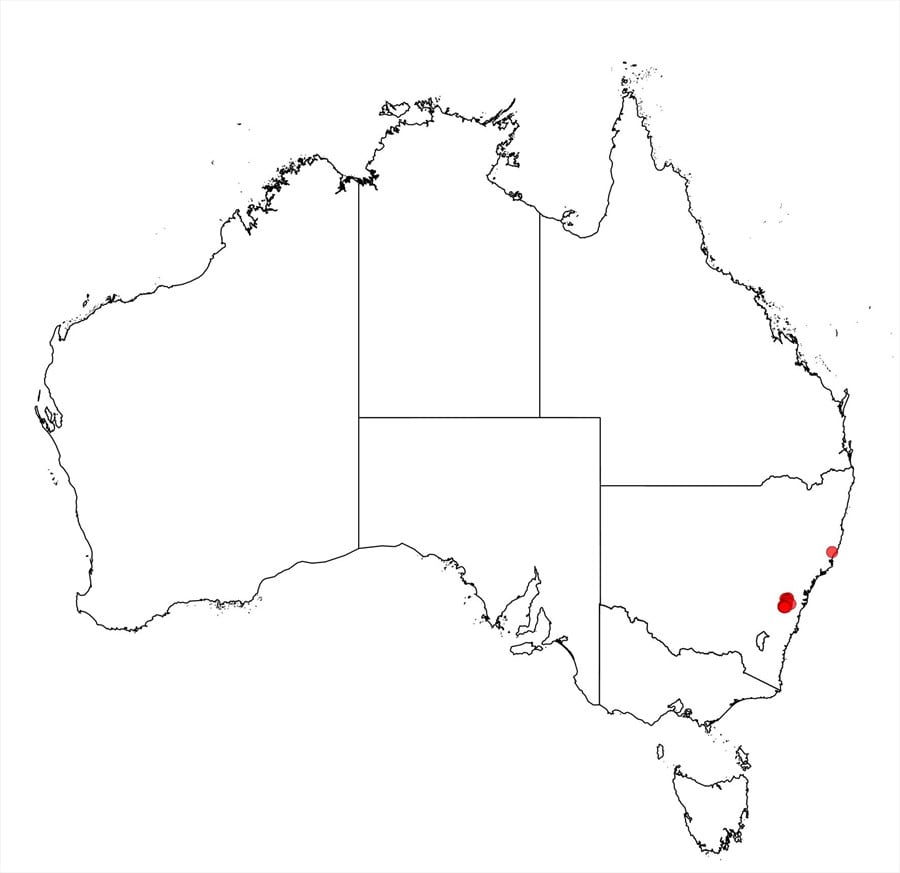Acacia clunies-rossiae Maiden
WATTLE
Acacias of Australia
Common Name
Kowmung Wattle
Family
Fabaceae
Distribution
Restricted to the valleys of the Kowmung and adjacent Cox’s R. in the Blue Mtns, N.S.W.
Description
Bushy shrub or tree 2–6 (-10) m high. Branchlets often pruinose, with indumentum of sparse to moderately dense minute appressed straight hairs. Phyllodes narrowly oblong-elliptic to oblanceolate, (2.5–) 3.5–6.5 cm long, 4–10 mm wide, mucronulate, thin, ±glaucous, with indumentum as on branchlets (young tips greyish white due to denser indumentum), 1‑nerved; lateral nerves obscure; gland 2–7 mm above pulvinus, submerged and swollen within the lamina in a ±pouched fashion. Inflorescences racemose; raceme axes 1.5–5. cm long, with indumentum as on branchlets; peduncles 2–4 mm long; heads globular, small, 7–9-flowered, bright light golden. Flowers 5-merous; sepals ±free; ovary glabrous. Pods raised over seeds along midline, to 6 cm long, 7–10 mm wide, firmly chartaceous, pruinose, glabrous. Seeds longitudinal, oblong-elliptic to slightly ovate, 5.5–6 mm long, shiny, black; aril clavate.
Habitat
Grows in skeletal soil on rocky slopes of commonly slate or shale, or in gravel and alluvium along creeks, in dry sclerophyll Eucalyptus forest.
Specimens
N.S.W.: Squatting Rock Gap, 4.8 km W of Yerranderie, E.F.Constable 5654 (MEL, NSW, PERTH); Armour Ra., NW of Yerranderie, A.Rodd 504 (NSW).
Notes
Most closely related to A. caesiella and A. barringtonensis but distinguished especially by its glabrous ovary, generally fewer-flowered heads and submerged, swollen, pouch-like gland (somewhat similar to those of A. kettlewelliae).
FOA Reference
Data derived from Flora of Australia Volumes 11A (2001), 11B (2001) and 12 (1998), products of ABRS, ©Commonwealth of Australia
Author
Minor edits by B.R.Maslin
B.R.Maslin
This identification key and fact sheets are available as a mobile application:
URL: https://apps.lucidcentral.org/wattle/
© Copyright 2018. All rights reserved.







